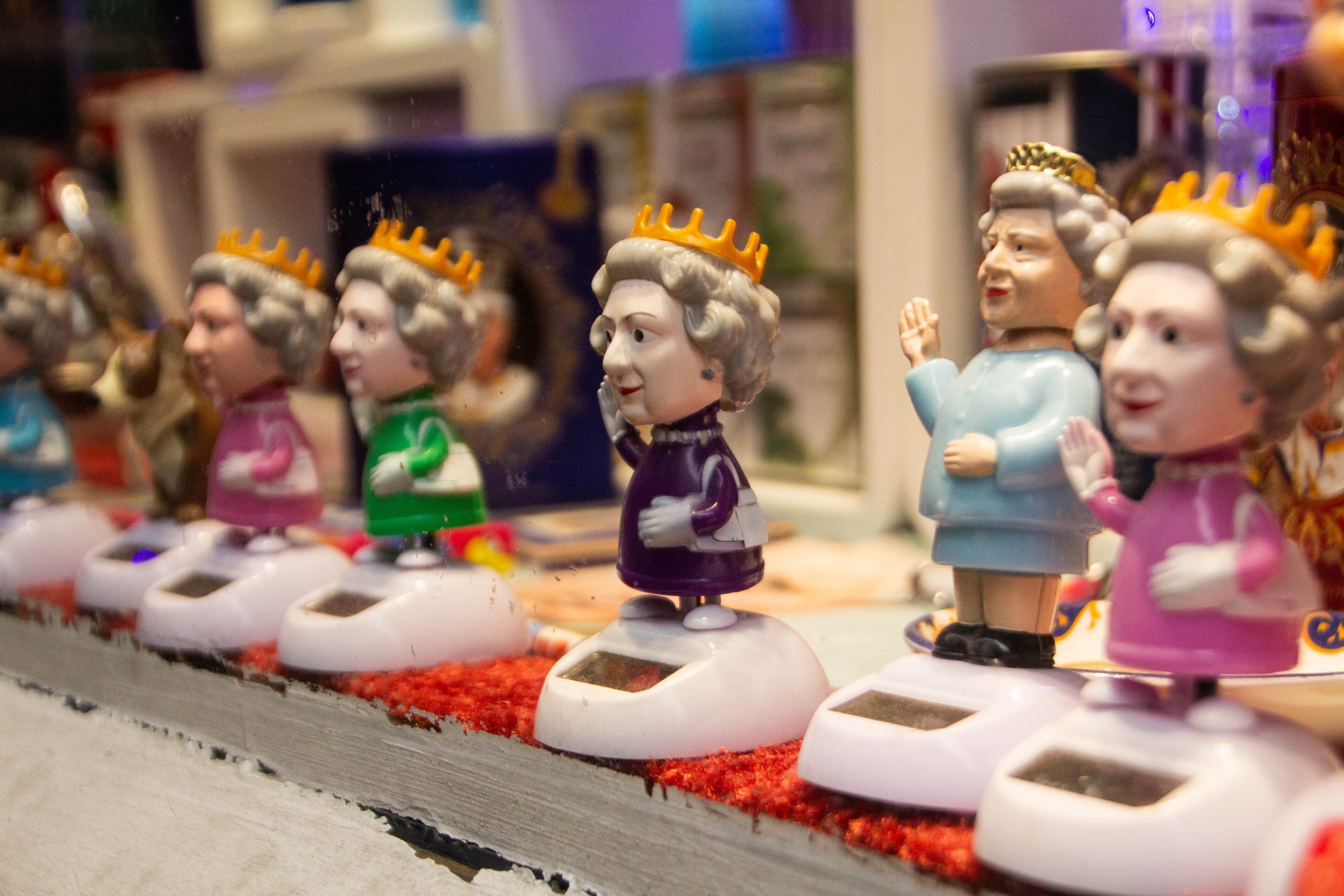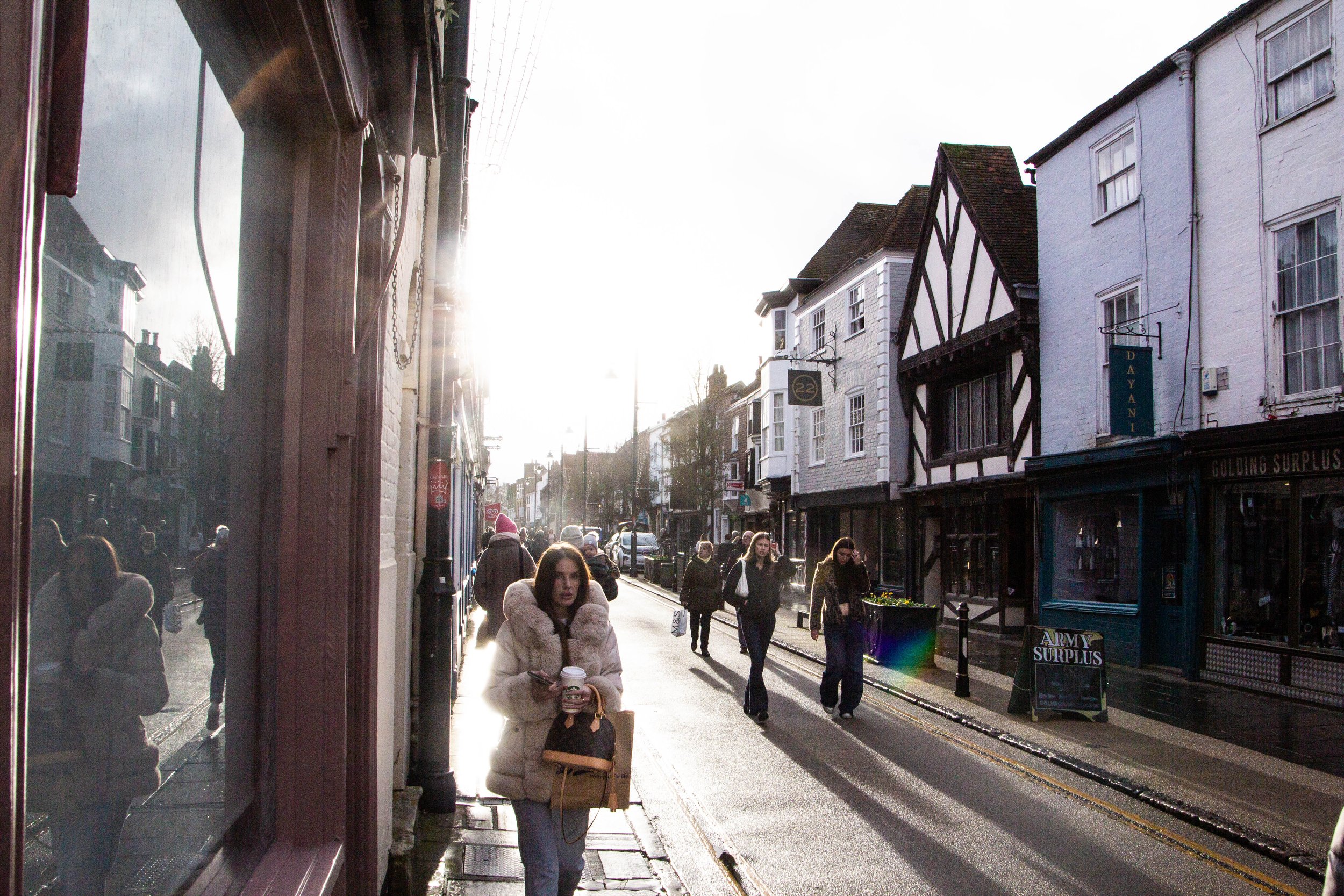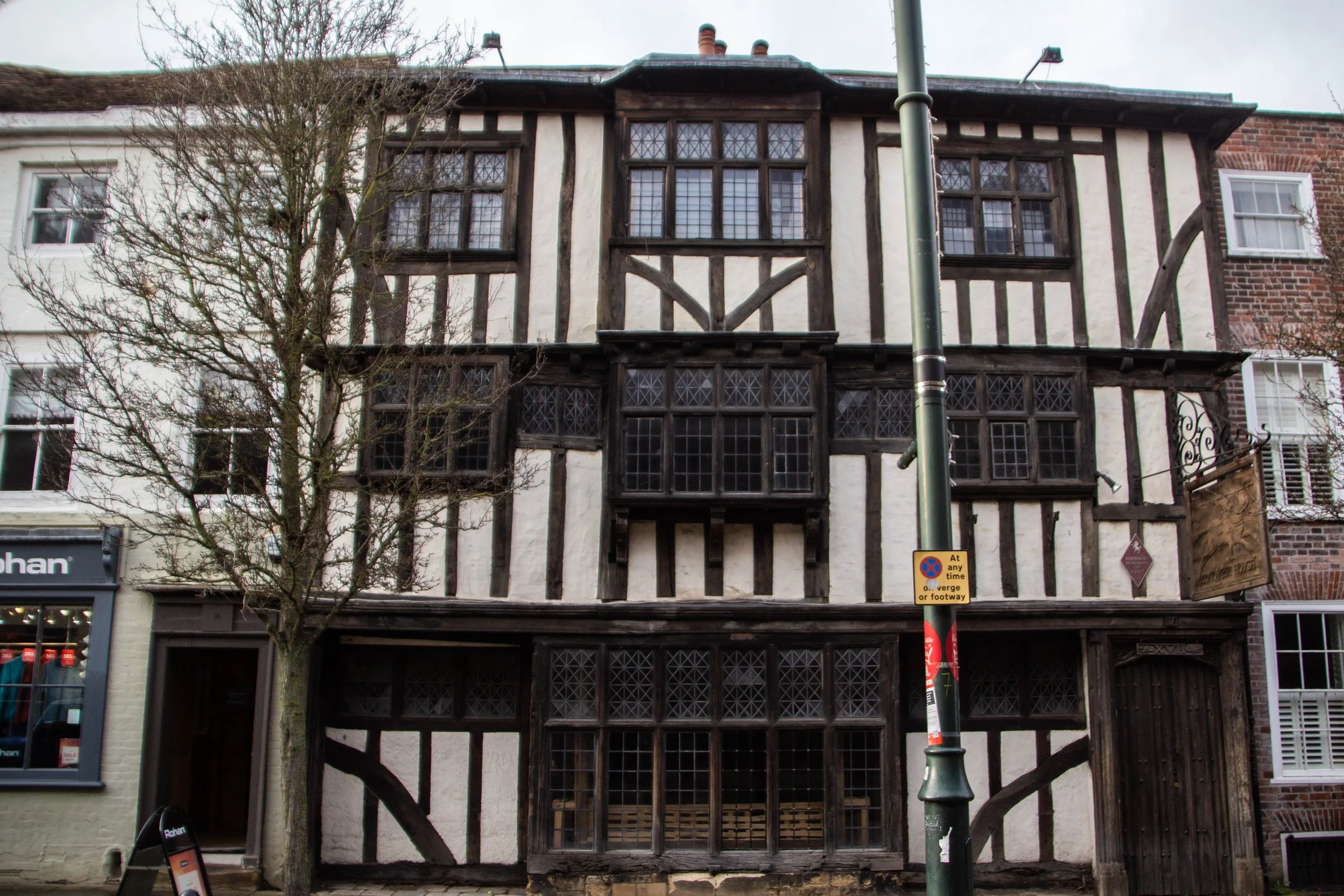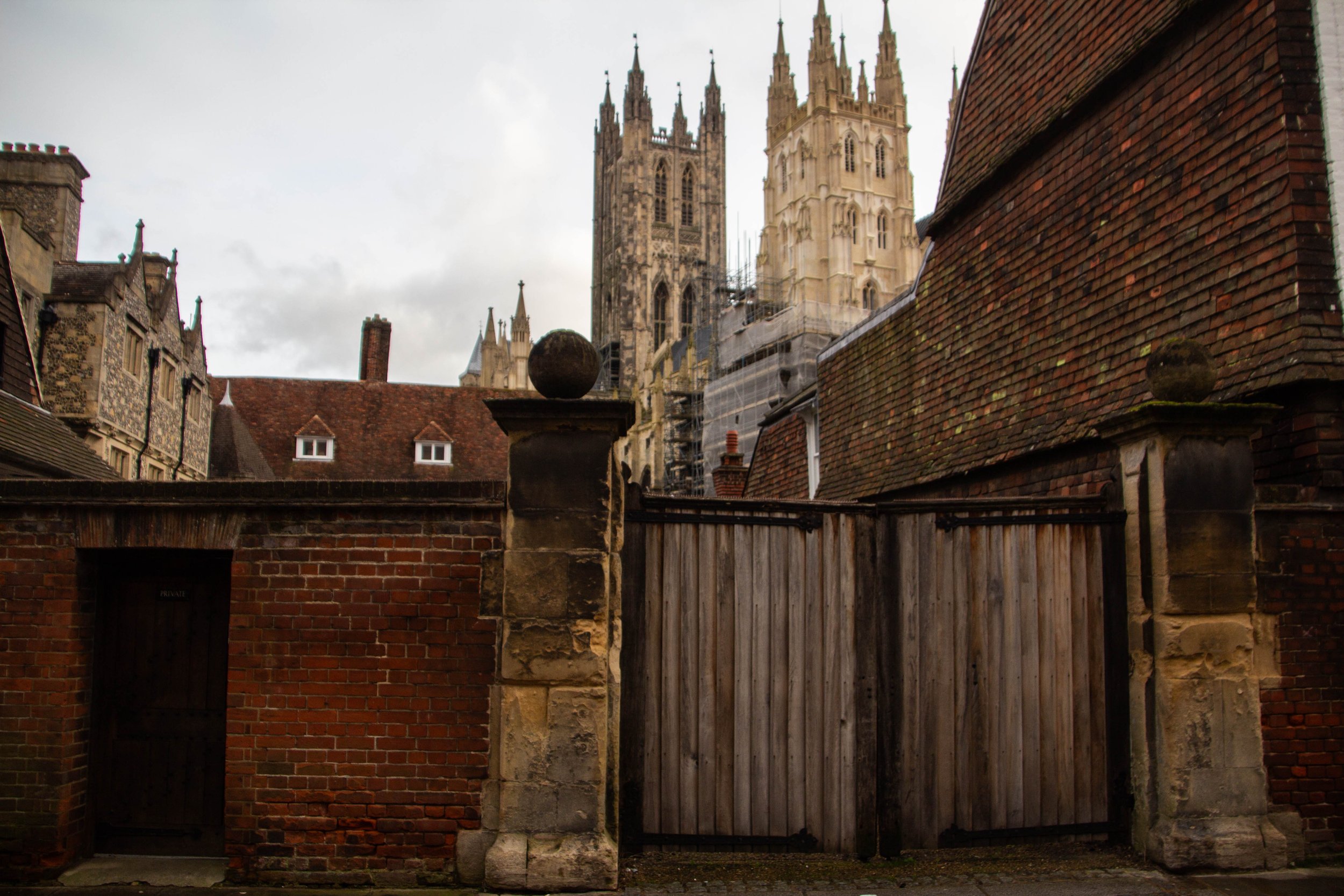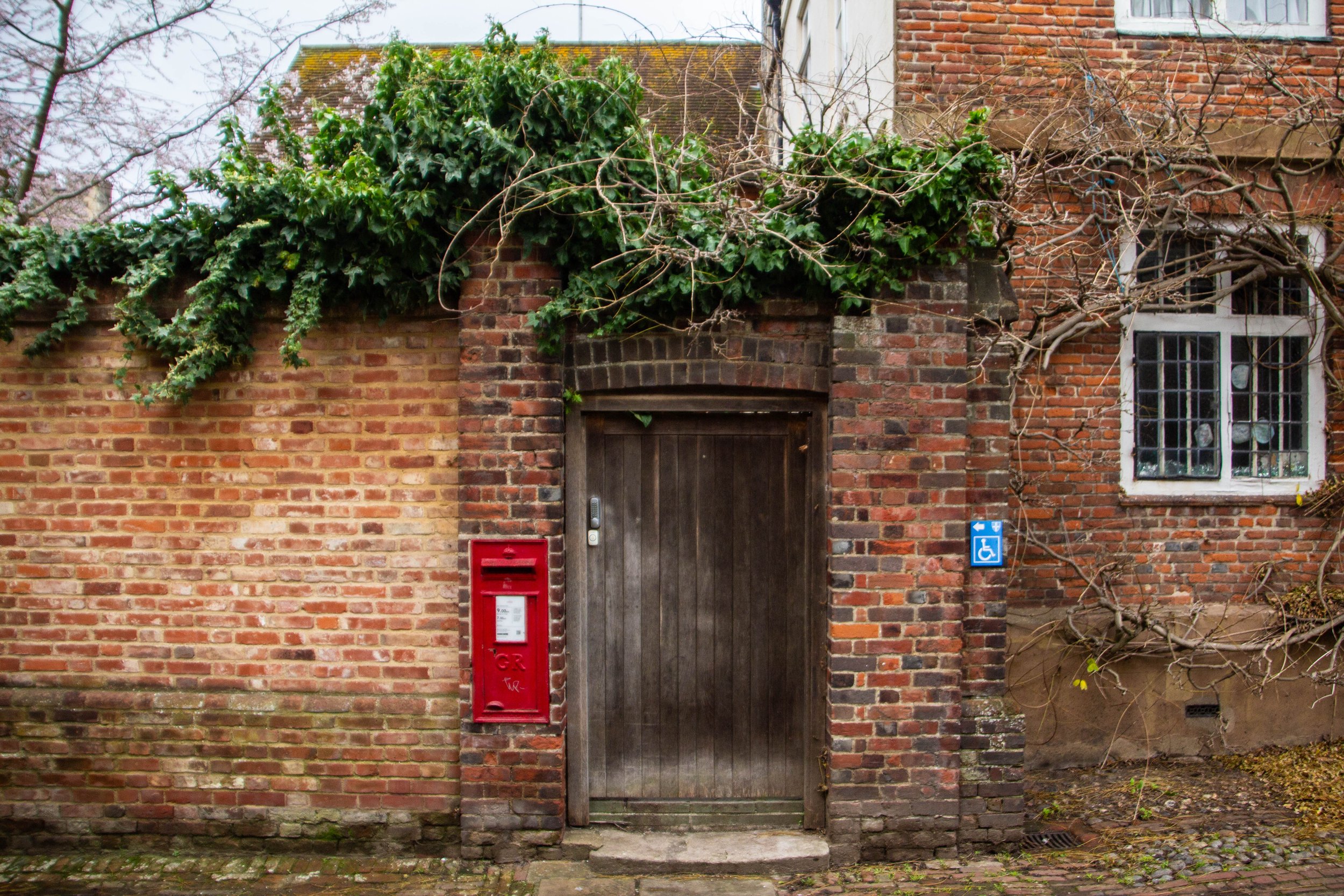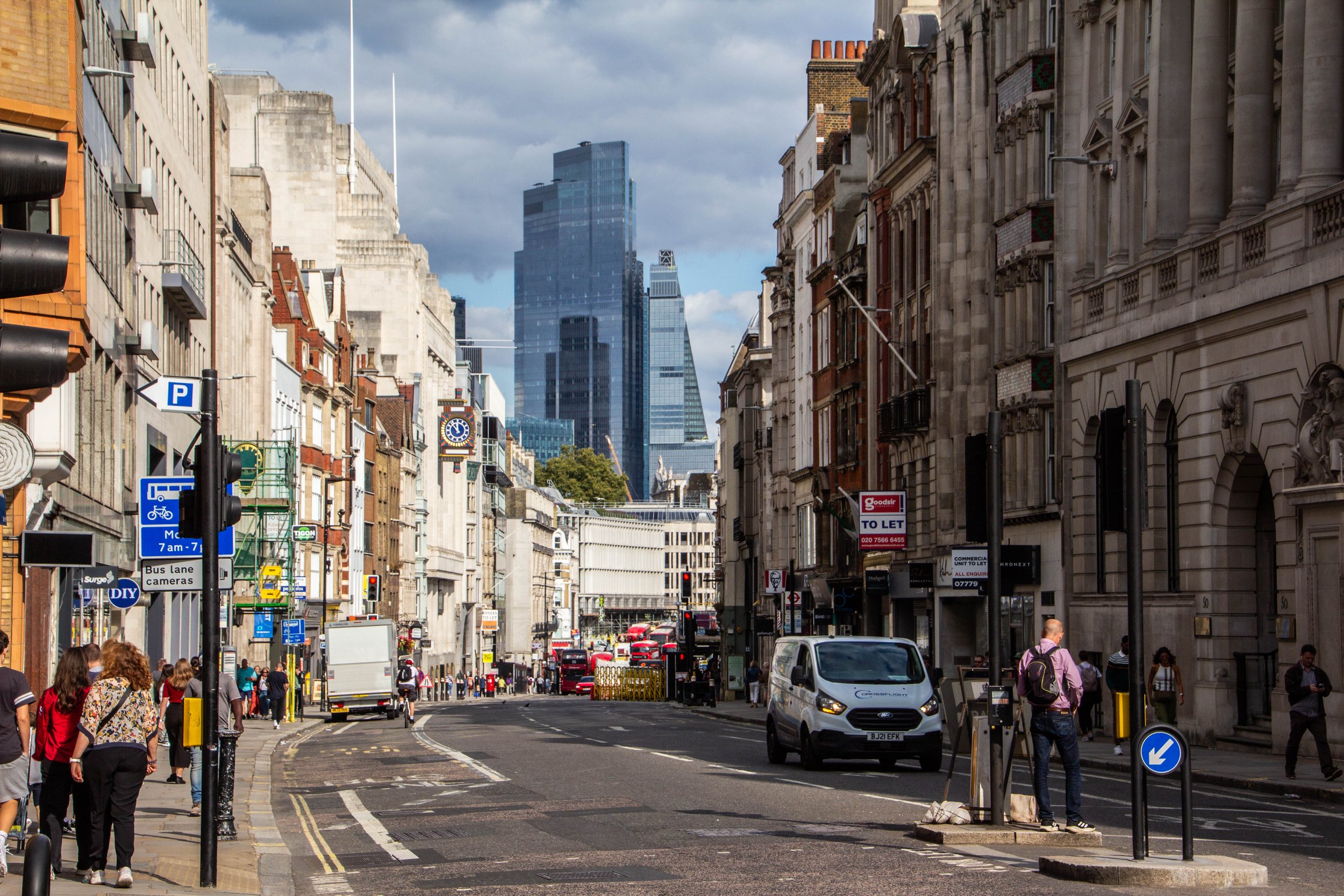This trip was the first time I had ever seen ANYTHING outside of London in England.
After 5 months in the biggest city I’ve ever lived in, it was a bit of a relief to be heading toward something a bit less busy. London is great… but it can be a lot. Especially during the “festive period,” as the Christmas / New Years season is called here. You can read about Christmas in London here; this trip to Canterbury was something of an escape from all of that craziness. This context is also useful because it will help the Christmas decorations around Canterbury make sense. So without further ado, let’s make our way to London Bridge Station and catch a an over-ground train out of town! By train, the time between these two points is only about 1.5 hours. Here’s the map to show you how close Canterbury is to London.
Exploring Canterbury
When we arrived in Canterbury, the weather was pretty dreadful. It was cold, gray, windy, and spitting rain… but I suppose this makes for a more authentic experience in the British Isles. Whilst we are walking from the train station to the more central stretches of town, let me tell you a bit about this place.
Canterbury—like most things in Europe—has a recorded history that goes back pretty much as far as the records go. The first specific mentions of Canterbury were as a tribal Celtic settlement in the Iron Age, but it was soon swept up into the Roman Empire. Yes, the Roman Empire extended far enough north to include all of modern-day England. Consequently, there are Roman ruins in Canterbury, which you can see in the picture of the open field in the gallery below. They’re not much to look at nowadays, which is why it was not a central feature of this trip, but it’s interesting history.
So let’s fast forward. The Romans left. Farmers and peasants moved into the abandoned Roman city. There were Viking raids. Canterbury was (briefly) captured by France in 1215. It rose to become the 10th largest population center in England… but then the Black Plague happened. [Insert entire history of England here.]
It seems to me—armchair historian that I am— that the most significant development in the history of Canterbury was the construction of the cathedral in 597. The Canterbury Cathedral is a marvel of gothic architecture and remains immensely important in the modern day. In fact, before I had actually visited this place, I mostly just thought of it as the town around this cathedral. We’re going to spend a lot of time exploring this cathedral today, but first, let’s have a walk through town.
It turns out that the town of Canterbury is quite charming in its own rite! My sample size is still quite low when it comes to England, but this felt—to me—like the quintessential English town. Even in the rain, it makes for some lovely walking. As of writing this, Canterbury has a population of ~156,600, which makes it a pretty small place, but the central stretches of the town have all the hustle and bustle of London! Of course, it immediately fades away as soon as you leave the central commercial district, but here’s the point: life is happening here!
Canterbury Cathedral
So why is the Canterbury Cathedral so g-darn important?
Because this is basically the headquarters for the Church of England. The archbishop of Canterbury is the head of the Church of England, and is therefore a consistent face in British culture and politics. If you spend any time consuming content related to the history of England, like The Crown, or even WWII documentaries, you’ll notice the archbishop of Canterbury making regular cameo appearances. So, Canterbury is something of a pilgrimage for Anglican Christians around the world. It’s a deeply important spiritual site, and it’s easy on the eyes too.
As stated above, Canterbury cathedral was officially founded all the way back in 597. However, the cathedral as it stands today was actually (re)built after a fire 1174. Before we actually enter the cathedral, let me start by showing you the grounds. It really does help envision what life would have looked like here almost a millennium ago.
And now, let’s go inside.
This place definitely makes an impression on you. My only basis for comparison in England at this point was Westminster Abbey, and I definitely think that this place is bigger and more impressive. Apparently the Cathedrals in York and Liverpool are even bigger than this one, but those are for future posts. Canterbury’s importance is so well-cemented that it doesn’t need to participate in any size-based competitions.
The interior of this cathedral is dense with history. Royals buried here include Joan of Navarre Queen of England, Henry IV King of England, and Edward “The Black Prince”, and there are a great many other notable figures whose final resting place is here as well. The 1170 murder of Archbishop of Canterbury Thomas Becket, a.k.a. Saint Thomas of Canterbury is also an extremely notable piece of history, as it happened inside the church at the hands of supporters of Henry II (who was the King of England at the time). I could write you 20,000 words on the history of this place if I had to (which is not to say that I would enjoy it), but the tid-bit that stuck with me the most from this visit was as follows…
It was at Canterbury Cathedral that I first learned what an “anchorite” was. This is a religious practice wherein somebody withdraws from society to lead a solitary life devoted entirely to prayer, often being sealed inside cells, walls, or columns in or attached to churches. There were usually 2 or 3 small windows, through which they could “attend” mass, have limited interactions with people on the outside world, and trade their bodily waste for fresh food.
Ya. 😳
Because of the religious nature of this practice, anchorites often believed that their souls would be damned if they ever left their enclosure, as this would constitute a violation of their vow. However, in most cases I don’t think they could have gotten out on their own even if they wanted to. They were literally bricked into the wall, which meant that if there was a battle and the church caught fire, they were toast.
The practice peaked in popularity in the 1200s and 1300s, but—interestingly and perhaps unsurprisingly—there were often twice as many women to chose to do this than men. This demographic skew was particularly pronounced in England, where the number of anchorite women were at least 4x that of men. And some scholars believe that this was likely a drastic under-count, because record-keeping wasn’t always great. I don’t have a great source for this, but the gender gap here feels like a pretty clear indicator of just how much worse life was for women during this time in history.
If there’s one thing you can count on when learning about what medieval life was like, it’s that your own life will suddenly start feeling a LOT better in comparison. So I would like to extend my thanks to the people in the walls for this dose of perspective. I appreciate all of you. ❤️
The Cloister
Any Harry Potter fans out there?
Those of you who have watched the Harry Potter movies may find “the cloister” of Canterbury Cathedral a bit familiar. It looks suspiciously like the courtyard of Hogwarts. In fact, when I arrived here, I was 100% convinced that the movies must have been filmed here. I know that Hogwarts was filmed in a variety of old places like this around the UK—such as Cambridge—so I thought this must have been one of them.
Well, it turns out that the film studio had attempted to make this place part of the Hogwarts cinematic world, but Canterbury Cathedral actually turned them down. I think it had something to do with the church’s outlook on stories about the occult and witchcraft. So, that was a slight let-down, but the reason that Hogwarts is so enchanting to us—I think—is that is shows an idealized version of something that is, in fact, quite real. There are all sorts of beautiful examples of this gothic architecture around the British Isles, many of which would not feel out of place in Hogwarts. So, if you trace back the inspirational lineage of Hogwarts, there are lots of place in the UK where you’ll feel like you’re in the Potter-verse. And this is definitely one of them.
So, here’s the cloister. You can decide for yourself how Hogwarts-esque it truly is.
During 1940 and 1941, in some of the darkest days of WWII, the German Luftwaffe was executing a prolonged campaign of bombing across the UK which is today know as “The Blitz”. Canterbury is one of the most southerly population centers in England, and therefore was in easy reach of German bombers. Miraculously, the cathedral itself survived the Blitz, but an abbey sitting just next to the cathedral—like, less than 50 feet away—was not so lucky. Next to Canterbury Cathedral, the bombed-out ruins of this hapless structure sit quietly and overgrown. It’s a thought-provoking little spot. WWII history is crazy to contemplate.
My time in Canterbury was just a day-trip, so once we were satisfied with our visit, it was time to head back to the station to catch a train back to London. This walk was also quite interesting because it lead us out of the charming Canterbury city-center through a few stretches of the city that were really quite run-down and depressing. To me, the photograph of this sad, forgotten orange bong, which was sitting on a brick wall separating an ugly housing complex from a historic church cemetery captures this juxtaposition very well. England has got layers to it. And I probably won’t be in a position to comment on them until I have done more traveling outside of London.
Up next, coverage of my new English home will continue! We’re going to be back in London for a while and there is a lot more to see and do. So for now, I’ll leave you with one of my favorite modern-ish English spirituals.





























